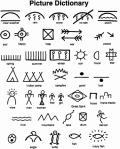The “lost worlds” are completely opposite to the modern Antarctic, teeming with strange life, even though all have turned to fossils.
According to a study recently published in the scientific journal Science Advances, an analysis of the geochronology and sedimentology of core samples taken from the Amundsen Sea continental shelf in West Antarctica has revealed two surprising “lost worlds.”
The first world is represented through deep sediment layers dating back to the mid-Cretaceous period, approximately 85 million years ago.
This layer is rich in fossil traces of countless strange plants and animals that no longer exist on Earth.

Evidence of a “lost world” from the dinosaur era beneath the icy Antarctic – (Photo AI: Anh Thư)
In addition to the fundamental fossils, spores and pollen preserved in the ice also reveal a temperate rainforest that once thrived in what is now a land of permanent ice.
This discovery provides solid evidence for a hypothesis suggesting that during the age of the dinosaurs, there was a time when Earth was much warmer—at least in the southern hemisphere—and that present-day Antarctica was a land abundant with life.
The second sediment layer, which is shallower, holds evidence of another lush period during the Paleocene epoch (55.8-33.9 million years ago) of the Cenozoic Era, which immediately followed the Cretaceous period when the dinosaurs became extinct.
The sediment reveals that Antarctica during the Paleocene was still a vast river plain, with a significant organic load, indicating that many plants and animals inhabited the area at that time.
This ancient river plain had a “backbone” formed by a massive river system flowing from the rising Antarctic mountain range into the Amundsen Sea.
According to Heritage Daily, scientists had previously been aware of another ice-free period in Antarctica, through the unfortunate Terra Nova expedition from 1910 to 1913.
This expedition discovered fossils from the Glossopteris plant, a genus of seed ferns that became extinct during the Permian-Triassic extinction event, which occurred around 252 million years ago.





















































